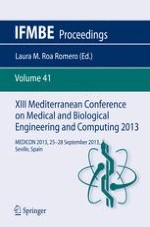2014 | OriginalPaper | Buchkapitel
Volitional Intention and Proprioceptive Feedback in Healthy and Stroke Subjects
verfasst von : M. Gandolla, S. Ferrante, F. Molteni, E. Guanziroli, T. Frattini, A. Martegani, G. Ferrigno, A. Pedrocchi, N. S. Ward
Erschienen in: XIII Mediterranean Conference on Medical and Biological Engineering and Computing 2013
Aktivieren Sie unsere intelligente Suche, um passende Fachinhalte oder Patente zu finden.
Wählen Sie Textabschnitte aus um mit Künstlicher Intelligenz passenden Patente zu finden. powered by
Markieren Sie Textabschnitte, um KI-gestützt weitere passende Inhalte zu finden. powered by
Increasing somatosensory input and concurrent volitional intention can enhance functionally relevant brain reorganization after stroke and is a potential mechanism of action of functional electrical stimulation (FES). Here we used fMRI to investigate this interaction in the brain during FES. FES is used as a method to augment proprioception during an active motor task. 17 controls and 11 chronic post-stroke patients were scanned during four conditions in a 2x2 factorial design: (1 & 2) repetitive unilateral active (moved by the subject) ankle dorsiflexion with and without concurrent electrical stimulation, (3 & 4) repetitive passive (moved by the experimenter) ankle dorsiflexion with and without concurrent electrical stimulation. In controls, all conditions elicited activity in regions known to be part of ankle motor control network. FES had an additional effect in primary sensorimotor areas (i.e. primary motor cortex – M1, primary somatosensory cortex – S1) during active compared to passive movement. In patients, all conditions elicited activity in a more widely distributed network, that included S1 and M1. In particular, FES had a greater effect during active compared to passive movement in secondary areas (i.e. ipsilesional postcentral and angular gyrus). Angular gyrus is a recipient of proprioceptive information encoded in the postcentral gyrus. These results suggest that the interaction takes place in a more widely distributed network of brain areas after stroke, and that patients may take advantage of secondary areas to support motor learning.
